- Home
- Isaac Hooke
Forerunner Page 6
Forerunner Read online
Page 6
“I disagree,” Jain said. “The Hippogriff is designed for defense. It has an expanding shockwave weapon able to take down multiple foes that might assail both of your ships. And your specialized drones can form an energy shield, augmenting the Wheelbarrow’s own force field. Like I told you, perfect for defense. Also, you haven’t completed repairs, and I want to get underway as soon as possible.”
Gavin sighed. “There’s nothing I can do to change your mind, is there?”
“Look, I know you want to come,” Jain said. “You think this is some grand adventure, and you feel like you’re missing out. I—”
“I don’t think that,” Gavin said. “Well, maybe a little. I just don’t want to be left behind babysitting all the time.”
“And you won’t be,” Jain said. “You’ll get your chance to fight, I’m sure. We all will. But I’m also convinced we won’t be seeing any combat at the derelict.”
“And if you’re wrong?” Gavin asked.
Jain shrugged. “Then I’m wrong.”
“I doubt the aliens will leave anything behind the next time they attack,” Gavin said. “They’ll be very careful to vaporize any wreckages. If we lose the next fight, it will be our last.”
“I’m well aware,” Jain said. “Which is why I’m going to try very hard not to lose.”
Gavin shifted his weight from one foot to the other, and fidgeted with his hands. Obviously, he was waiting to go.
Jain paused, and took a deep breath. “I’m sorry if the tone of this meeting has offended you or endangered our friendship in any way.”
Gavin’s face darkened, but his next words were calm, composed: “We never had a friendship. So no worries there.”
Jain nodded gravely. “I suppose not. Is there anything else you’d like to talk about in private while we’re here?”
“No,” Gavin said.
“Then you’re dismissed,” Jain told him.
With that Gavin vanished.
Jain sighed deeply.
He was glad to have that over with. Discipling troops had never been the funnest thing for him when was lieutenant commander of a SEAL team, but it needed to be done occasionally. From what he could remember, even SEALs liked to misbehave. Especially when it came to hazing new recruits or getting into off-base bar fights.
It was going to be good to get away from Gavin for a while. While it was true Jain considered the Hippogriff more of a defensive than offensive ship, Gavin’s combative nature and contempt for his command was another reason Jain was leaving him behind rather than anyone else.
But Jain wasn’t going to reveal that to Gavin, of course.
6
Jain returned to the bridge. Gavin’s avatar wasn’t present, of course. After a dressing down like that, it wasn’t surprising. He maintained his usual voice-only connection.
Sheila turned toward him. She gave him a supportive smile.
Jain inclined his head in return.
“There’s something I’ve been wanting to show you,” Sheila said. Maybe that smile hadn’t been supportive after all, but rather… placating. It was the kind of smile you gave someone when you were about to ask them for a favor.
The range of human emotions our avatars can convey never ceases to amaze me. And that we, as machines, are even capable of such emotions amazes me even more.
“Let’s see it, then,” Jain said.
“Okay well, I’ve been working on something,” Sheila said. “A little side project. It’s a design for a special ship.”
Cranston looked up from his station. “A special ship? You’ve designed a new type of ship?” The doubt was obvious in his voice, like he didn’t believe that Sheila was capable of such a thing.
“I have,” Sheila said, lifting her chin higher in defiance.
“We don’t need a ship,” Gavin said over the comm. “We need a rift back to Andreas I.”
“This is no ordinary ship,” Sheila said.
“You’ve got all of our attention,” Jain said. “Let’s see it.”
A three-dimensional object materialized in front of Sheila. Jain was reminded of a diamond ring, because the top section was multifaceted, like a cut gem, while the bottom was a big, hollow circle that dwarfed it.
“This is a ship?” Jain asked.
“It is,” Sheila replied. “This here is the focusing array.” Sheila pointed at the ring area. “I based it on the designs of the Banthar mothership we have stored in our cloud archives. Designs that were stolen from the Bolt Eaters during one of their return visits to Earth.”
The Bolt Eaters were a group of famous Mind Refurbs who had single-handedly conquered the homeworld of the Banthar—aliens who had attempted to invade Earth. The Bolt Eaters had taken control of the AI running the world, which gave them complete power of the Banthar and their resources. Ever since finding out he was a Mind Refurb, Jain had aspired to be as great as the Bolt Eaters were.
“Of course,” Sheila continued. “The Banthar use a deployable version of the ring, but a design like that is too complicated, at least to build quickly. So I opted to design the rift generator externally like this, so that it’s deployed and ready to go at all times.”
“So, what are you saying, this is basically a ship with a Rift Gate built into it?” Cranston asked.
“It’s more than that,” Sheila replied. “The ring isn’t a gate, but a generator: with it, the ship is capable of projecting a rift in front of it at will. We can use it to create wormholes to any nearby systems, just like a standard Rift Gate. But unlike a standard gate, we can take the ship and its generator with us, so we don’t have to build another on the far side if there’s no preexisting gate at our destination.”
“It can create a rift at will, you say?” Cranston pressed.
“Well, it can create one gate every twelve hours,” Sheila said. “And then it needs to recharge using its onboard fusion reactor. It also still needs the usual four hours to form a wormhole to a destination system for the first time, like a real gate. But after that, the creation is instantaneous.”
“Why hasn’t humanity built a ship like this in the past?” Mark said.
“Yeah, that’s a good point,” Gavin said over the comm. “We’re supposed to believe that you came up with this design after a quick perusal of the alien blueprints, and no one else on Earth ever did? Because according to our cloud databases, all other colonized systems rely exclusively on Rift Gates both for transportation, and communications.”
“Rift Gates have their places,” Sheila said. “The Interstel wouldn’t exist without them, for example. But that’s not to say rift projection ships like my own design don’t exist. They probably do, but they’re classified. The US wouldn’t necessarily want to reveal it had such a ship to Canada, Mexico, or South American. Nor the UZO.”
The latter stood for the Uninhabited Zone Occupiers, the small country formed by the five thousand or so settlers who had begun to recolonize the uninhabited zone, that hemisphere of the planet the Banthar had razed during their initial invasion attempt, which included the continents of Africa, Europe, Asia, and Australasia. The UZO didn’t have spacefaring capabilities yet, but Canada and South America did, and they already had a few colonies each.
“If we were still in contact with headquarters,” Sheila continued, “and they knew I was building a ship like this, they would probably tell me to stand down. Or then again, maybe they would let me, given our circumstances.”
“All right, so how long will it take to make this ship?” Jain asked.
“That’s the only downside,” Sheila replied. “Three months. Whereas an ordinary Rift Gate would only take a month.”
“Can we afford three months?” Cranston said.
“I think so,” Jain said.
“And what if whoever attacked us decides to return before then?” Gavin sent over the comm.
“We’re going to have to hope that they don’t,” Jain said. “A mobile rift generator is too valuable a piece of equipment to pas
s up. We can’t be building gates in every new system we arrive at, especially if we decide not to go back to Earth.”
Mark turned toward Sheila. “Are you sure it’s even going to work?”
“About ninety-nine point nine nine five percent sure,” Sheila replied.
“So not a hundred percent,” Mark pressed.
“No,” Sheila admitted.
“What are you going to use for the AI?” Jain asked her.
“I’ll be skimping out on the AI part,” Sheila answered. “It’ll be entirely remotely operable. I can authorize access for all of you, or some of you, as needed.”
“One last question,” Jain said. “And it’s not related to the rift ship. Would you be able to build a cloud storage center with enough neural network partitions to store our backups off-site? I’m thinking of storage pods of some kind we could all hold in our cargo bays, to hold backups of each other.”
Sheila paused to consider that. “I could… but it would take me a month, especially for so many. Neural networks are complicated components. The build quality has to be damn near perfect, otherwise the whole unit has to be chucked and created again from scratch. It would also impact the rift ship production schedule.”
Jain shook his head. “Focus on the rift ship, first. The off-site backups can come after. Get started as soon as you can.” He glanced at Xander, who was standing in his usual robes with his arms wrapped around each other and hidden in the mutual sleeves. “Are you ready to set course for the Oberon?”
Xander nodded. “I have been ready for the past half hour.”
“You’re certain we won’t have to attach more radiation armor to protect us from the gas giant’s emissions?” Jain said.
“As I told you before, our armor is sufficient,” Xander said. “If we were carrying humans aboard, it would be a different story. As it is, we can stay within close orbit for up to three days without any adverse effects.”
“All right,” Jain said. “It’s time to collect our repair swarm. Medeia, Mark, Cranston, collect your swarms, then proceed toward the Oberon.”
“Wait,” Gavin said. “Maybe you should leave some of your drones behind. That way Sheila and I will be repaired all the faster.”
“No,” Jain said. “If we’re damaged out there, we might have to make repairs on the fly. We’re going to need all the drones we can get. Sorry, we’re not leaving any behind.”
Jain steered the Talos alongside the Wheelbarrow, which he had lent all of his repair drones, and waited for the units to return to the storage bays aboard. He left some of his mining units and one transport behind to help ferry materials to the Wheelbarrow while Sheila built the rift projection ship.
Mark, Medeia, and Cranston likewise collected their drones, and some of their mining and transport units, and then the four of them set out toward the derelict.
When Jain, or rather the Talos, was an hour out from Metal Moon, Sheila dropped out of the VR environment. Gavin also logged off the comm—the two were too far away for realtime communications, but they could still send voice or holographic messages with a time lag that was increasing by the minute.
The remainder of the journey was uneventful. Mind Refurbs were programmed with a time sense that divvied up the cycles per second assigned to their consciousness in such a manner as to simulate the passage of time as normal humans experienced it. However, that time sense could also be accelerated or slowed down to make external time seem to pass slower or faster respectively. It was useful when one needed to plan a strategy during a surprise attack, or to pass the time during a monotonous voyage. Considering that he was experiencing the latter at the moment, Jain slowed down his time sense to make the trek pass by faster; he instructed Xander to pull him back to ordinary time, or a slightly slower version of it, if anything unexpected transpired.
But nothing did, and he and the Space Machinists approached Ol’ Faithful without encountering any problems.
Jain switched his time sense to normal as they made their orbital run; the hull and inner compartments were linked to his tactile subroutines, which let him feel the different stresses exerted on the vessel. The feeling was akin to what a human would feel when someone stretched the skin of certain parts of the body, and pinched others. He could also feel internal pressures that felt similar to stomach and intestinal bloat. He was experiencing the multiple forces at work: the gravity from the moon, the existing momentum of the Talos, the acceleration necessary to keep the vessel on course. The Delta V costs were certainly up there. He kept an eye on the propellant levels.
“We’re definitely going to have to find a supply of frozen water when we’re done here,” Jain said. “Have you finished your scan of Ol’ Faithful’s moons?”
“I have, and you’re in luck,” Xander said. “The seventieth moon has ample quantities of frozen water. It orbits an average of one point two million kilometers away from the planet.”
“Say again?” Jain asked. “Did you say seventieth, or seventeenth?”
“Seventieth,” Xander said. “The gas giant has captured over two hundred notable satellites.”
“That’s a lot of moons,” Jain quipped.
“It is indeed,” Xander told him.
“All right, we’ll head there when we’re finished in close orbit,” Jain said.
According to Xander, they could stay in close orbit for three days. It would only take another four hours to reach the ship, however they had to budget two days and fifteen hours to escape the gravitational pull. They’d be exposed to the gas giant’s radiation emissions the whole time until then. That left them a margin of error of five hours, which wasn’t bad at all.
Jain didn’t plan to stay very long of course. Just long enough to secure grappling hooks to the ship and to haul ass out of there.
If the AI core was destroyed, Jain still planned to salvage the ship and install an autonomous AI aboard. Even though it only had minimal weapons systems, he figured the Space Machinists could use all the help they could get at the moment. Worst case scenario, they could use it for spare parts if they ever found themselves in need of repairs and without any metals inventory, and were too far away from an appropriate planet, moon or asteroid.
Near the four-hour mark, the gas giant ate up almost the entire horizon below.
“How are we doing on radiation exposure,” Jain said.
“Armor is holding,” Xander said.
Jain and the others passed over the ship. They had arranged their incoming trajectories so that they were coming in at almost the same angle and momentum as the Oberon’s decaying orbit, but slightly above its actual course, the goal being to optimize the Delta V cost as much as possible while dragging the ship from the clutches of Ol’ Faithful. Cranston wanted to launch a boarding shuttle with an exploratory rover on board, with a plan to restart the engines, but Jain didn’t want to risk losing the shuttle. There was a chance the engines wouldn’t start, or that the Oberon had run out of propellant anyway.
The four ships planned to launch their grappling hooks during the flyby, and once the Oberon was in tow, they’d use the gravity well to slingshot to the other side of the planet and out of orbit. That would also set them well on their way to the seventieth moon. It would still take two days and fifteen hours to claw their way out of the immense gravity, and another three hours to reach the moon. Once there, they’d still be exposed to the gas giant’s intense radiation, but they could take shelter on the far side of the moon for a reprieve.
As Jain was flying over the Oberon and preparing to fire his grappling hook, Mark glanced at him.
“Look at the starboard hull,” Mark said. “Got an anomaly.”
Jain frowned at the interruption to his concentration; he amped up his time sense and reality slowed down around him. If he was going to look, he needed to be able to take his time, especially when he was so close to a delicate operation like firing a grappling hook, which required that he launch it at just the right time, and angle. He wondered if he sho
uld just let Xander do it.
Maybe he would.
But first, he had to look at this so-called anomaly.
He already had the data feed of one of the Talos’ ventral cameras overlaid on his HUD so that the Oberon floated slowly past below him. He digitally zoomed the camera in on the starboard side of the Oberon.
“What am I looking for?” Jain asked. His current timebase would have been sent to the rest of the team, courtesy of the data packet header that capped his transmission, and their Accomps would have automatically adjusted their time senses to match his.
Before Mark answered, Jain spotted the anomaly.
“Never mind,” Jain said. “It looks like there’s some kind of opening in the hull. The metal seems to be peeled outward, as if something broke in from the outside by cutting into the hull and pulling the sheeting back.”
“That’s it,” Mark agreed.
Jain studied the dark, square opening, and the twisted hull segment beside it, which reminded him of the curled edges of some gray parchment.
“Well this is something the probe didn’t spot,” Medeia said.
“No,” Cranston agreed. “The probe didn’t get close enough. It also flew past on the port side.”
“Do you still want to fire the grappling hook?” Mark asked.
“Yes,” Jain replied. “Of course I do. We need to find out what happened. It could give us a hint about what happened to us.”
“What if there’s something aboard?” Cranston chimed in. “Something alien. And we end up dragging it out of the gravity well?”
“Our mission could very well be to search for alien life,” Jain said. “So that’s all the more reason to salvage the ship. Besides, you’re not scared of one little alien, are you? We’re machines now.”
“Yeah, but what if there are more than one,” Cranston said. “And they’re not little? A few nasty aliens get inside us, it won’t matter if we’re machines; they can still mess up our innards. Last I checked, we don’t have any anti-boarding party devices aboard, considering how small most of the crawlspaces are.”

 Warden 2
Warden 2 Devastator
Devastator Warden 4
Warden 4 Emperor
Emperor Mech
Mech Conqueror
Conqueror Fighter
Fighter The Forever Gate Ultimate Edition
The Forever Gate Ultimate Edition Defiler
Defiler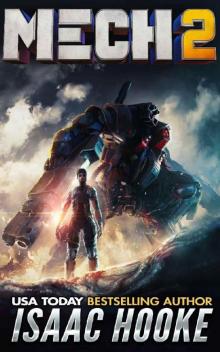 Mech 2
Mech 2 Warden 3
Warden 3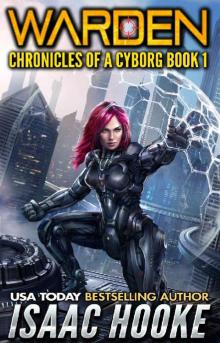 Warden 1
Warden 1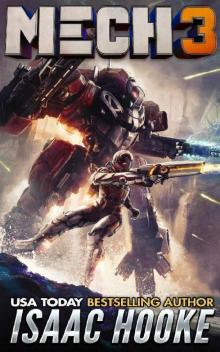 Mech 3
Mech 3 Forerunner
Forerunner The Alliance (AI Empire Book 2)
The Alliance (AI Empire Book 2) Breaker (Monster Tamer Book 1)
Breaker (Monster Tamer Book 1) Bender of Worlds
Bender of Worlds The Pendulum Swings (The Forever Gate Book 8)
The Pendulum Swings (The Forever Gate Book 8)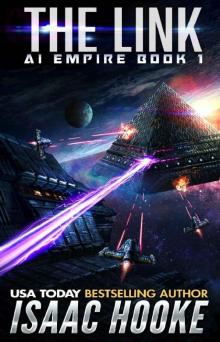 The Link
The Link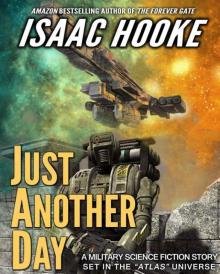 Just Another Day
Just Another Day Star Warrior
Star Warrior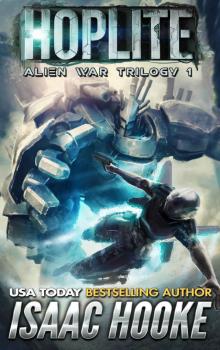 Alien War Trilogy 1: Hoplite
Alien War Trilogy 1: Hoplite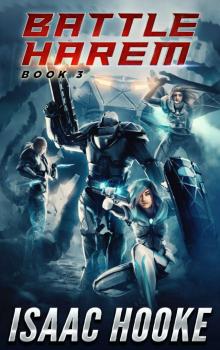 Battle Harem 3
Battle Harem 3 The Ethan Galaal Series: Books 1 - 3
The Ethan Galaal Series: Books 1 - 3 Reloaded
Reloaded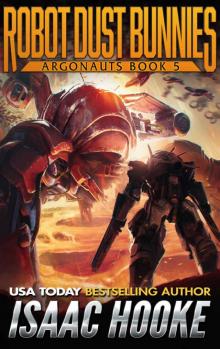 Robot Dust Bunnies (Argonauts Book 5)
Robot Dust Bunnies (Argonauts Book 5) Battle Harem
Battle Harem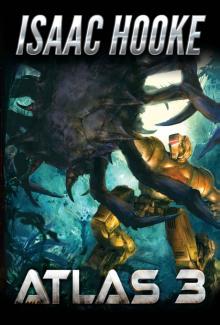 ATLAS 3 (ATLAS Series Book 3)
ATLAS 3 (ATLAS Series Book 3) Argonauts 2: You Are Prey
Argonauts 2: You Are Prey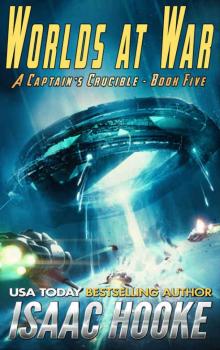 Worlds at War (A Captain's Crucible Book 5)
Worlds at War (A Captain's Crucible Book 5)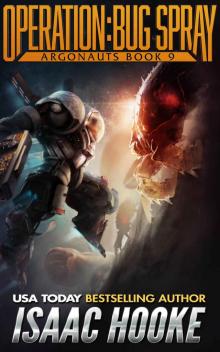 Operation: Bug Spray (Argonauts Book 9)
Operation: Bug Spray (Argonauts Book 9)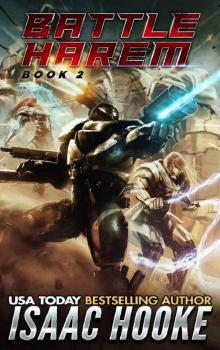 Battle Harem 2
Battle Harem 2 Redeemed (Bolt Eaters Trilogy Book 3)
Redeemed (Bolt Eaters Trilogy Book 3)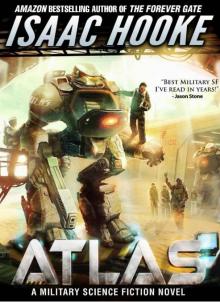 Atlas
Atlas Argonauts 1: Bug Hunt
Argonauts 1: Bug Hunt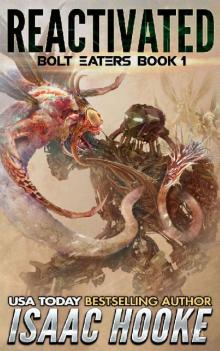 Reactivated (Bolt Eaters Trilogy Book 1)
Reactivated (Bolt Eaters Trilogy Book 1)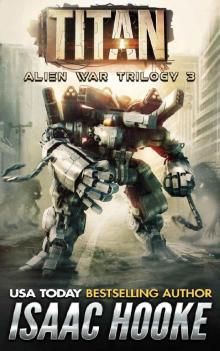 Alien War Trilogy 3: Titan
Alien War Trilogy 3: Titan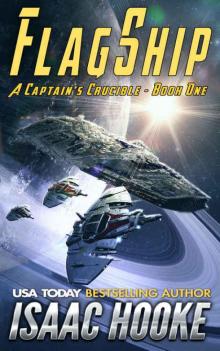 Flagship (A Captain's Crucible #1)
Flagship (A Captain's Crucible #1)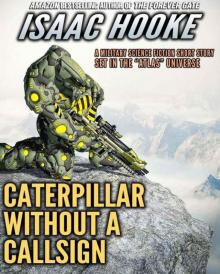 Caterpillar Without A Callsign
Caterpillar Without A Callsign The Forever Gate
The Forever Gate He Who Crosses Death (Star Warrior Quadrilogy Book 3)
He Who Crosses Death (Star Warrior Quadrilogy Book 3) Reforged (Bolt Eaters Trilogy Book 2)
Reforged (Bolt Eaters Trilogy Book 2)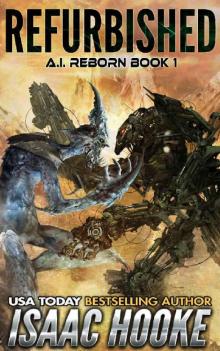 Refurbished
Refurbished Reloaded (AI Reborn Trilogy Book 2)
Reloaded (AI Reborn Trilogy Book 2) He Who Crosses Death
He Who Crosses Death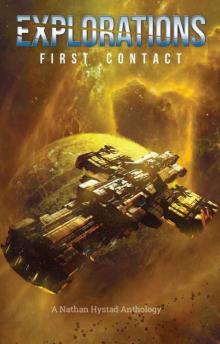 Explorations: First Contact
Explorations: First Contact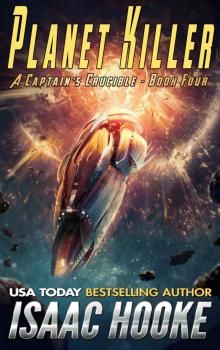 Planet Killer (A Captain's Crucible Book 4)
Planet Killer (A Captain's Crucible Book 4)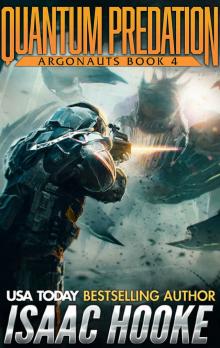 Quantum Predation (Argonauts Book 4)
Quantum Predation (Argonauts Book 4) Clandestine-IsaacHooke-FreeFollowup
Clandestine-IsaacHooke-FreeFollowup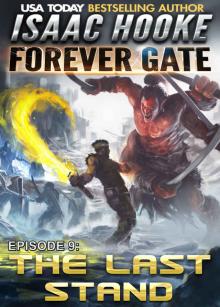 The Last Stand (The Forever Gate Book 9)
The Last Stand (The Forever Gate Book 9)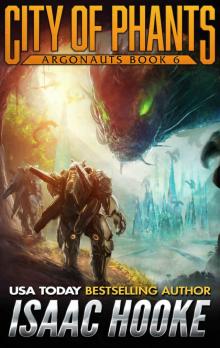 City of Phants (Argonauts Book 6)
City of Phants (Argonauts Book 6) Test of Mettle (A Captain's Crucible Book 2)
Test of Mettle (A Captain's Crucible Book 2)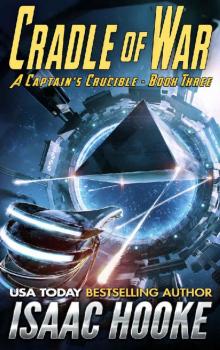 Cradle of War (A Captain's Crucible Book 3)
Cradle of War (A Captain's Crucible Book 3) Rade's Fury (Argonauts Book 7)
Rade's Fury (Argonauts Book 7) Rebirth (The Forever Gate Book 6)
Rebirth (The Forever Gate Book 6) The Forever Gate Compendium Edition
The Forever Gate Compendium Edition Mechs vs. Dinosaurs (Argonauts Book 8)
Mechs vs. Dinosaurs (Argonauts Book 8)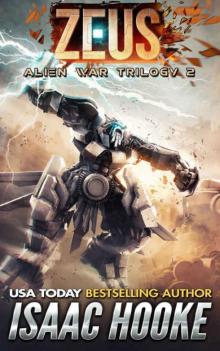 Alien War Trilogy 2: Zeus
Alien War Trilogy 2: Zeus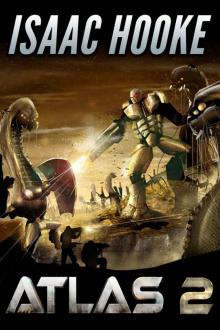 ATLAS 2 (ATLAS Series Book 2)
ATLAS 2 (ATLAS Series Book 2) Operation_Bug Spray
Operation_Bug Spray